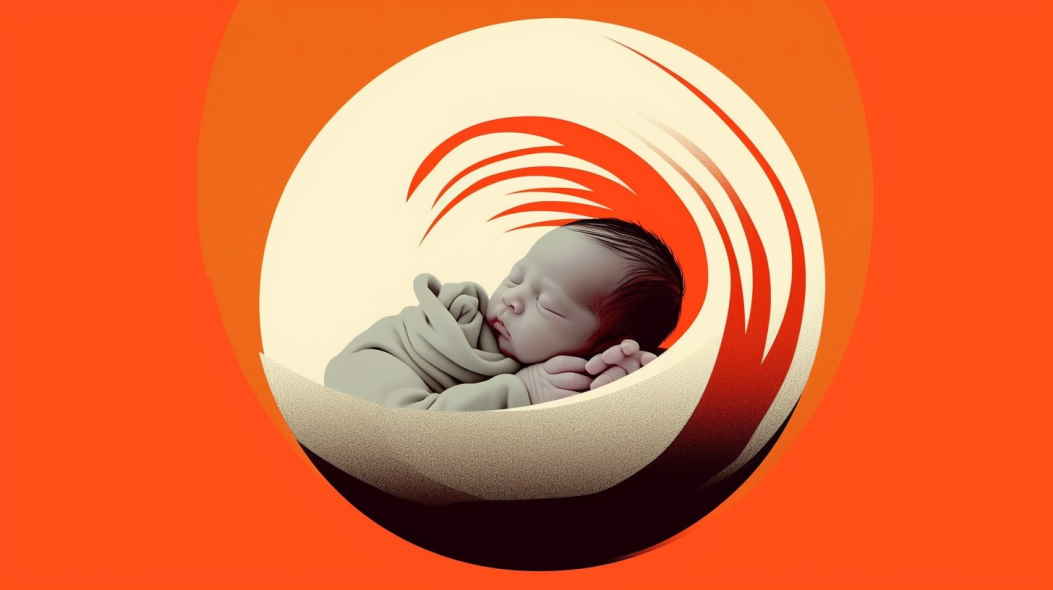Pregnancy is a fascinating journey where numerous biological processes take place, ensuring the proper development and growth of the baby inside the womb. One such vital process centers around how babies breathe in the womb. Unlike after birth, a baby’s breathing pattern while still inside the mother is quite different and innovative.
In the womb, babies do not intake oxygen and exhale carbon dioxide through their lungs like individuals do after birth. Instead, their oxygen and carbon dioxide exchange occurs through the umbilical cord and placenta, providing the necessary oxygenated blood supply for survival and growth. During pregnancy, babies also practice breathing movements to train their muscles and prepare for life outside the womb.
Understanding these intricacies helps expectant parents appreciate the miracle of life and the complex mechanisms at play during pregnancy. With knowledge about fetal breathing and development, parents can better anticipate the changes and milestones to watch for throughout the nine months of anticipation.
Baby’s Environment
Womb
The womb, also known as the uterus, is where the baby grows and develops throughout pregnancy. The baby is surrounded by a protective environment, which consists of the amniotic sac and amniotic fluid. The womb provides a safe and nurturing space for the baby, as it constantly adapts to the baby’s growth and development. In this environment, the baby relies on the mother for essential life-sustaining functions such as oxygen and nutrition.
Further reading: Sunny side up Baby, Spiritual Meaning and Symbolism
Amniotic Fluid
Amniotic fluid is a clear, yellowish liquid that surrounds the baby in the womb. This essential fluid serves several purposes, including:
- Cushioning and protecting the baby from any impact or external pressure
- Regulating temperature, ensuring that the baby stays warm and comfortable
- Allowing the baby to move and develop muscles and joints
- Facilitating lung development by allowing the baby to practice “breathing” movements
However, it is important to note that babies do not truly breathe inside the womb as we understand the breathing process. Instead of inhaling oxygen and exhaling carbon dioxide, the baby receives oxygen and nutrients from the mother via the umbilical cord and placenta, which also takes care of removing waste and carbon dioxide (source). Once the baby is born, the sudden change in environment triggers their first breath, and their lungs start working independently (source).
Oxygen and Carbon Dioxide
Oxygen Transmission
During pregnancy, a baby receives oxygen through the mother’s placenta and umbilical cord. The mother’s oxygen-rich blood is transferred to the baby via the placenta, which serves as a crucial connection between the mother and baby for the exchange of necessary nutrients and waste products. Oxygen from the mother’s blood diffuses across the placenta and into the baby’s blood.
In the womb, babies do practice breathing movements, but they do not actually breathe in oxygen and exhale carbon dioxide like adults do. The umbilical cord and placenta serve as the primary oxygen and carbon dioxide exchange for the baby.
Carbon Dioxide Excretion
Similarly, carbon dioxide produced by the baby is transferred back to the mother’s bloodstream through the placenta. The mother’s circulatory system then disposes of the waste products, ensuring that the baby is not exposed to harmful levels of carbon dioxide.
As the baby develops, its lungs become filled with amniotic fluid, and by 10-12 weeks of gestation, it begins taking practice breaths to develop and strengthen the muscles necessary for breathing after birth. However, these breaths do not provide any oxygen, and the lungs are only filled with more amniotic fluid.
In summary, the womb serves as a safe environment for the developing baby, with the placenta and umbilical cord supplying the necessary oxygen and disposing of carbon dioxide.
Placenta and Umbilical Cord
Roles of Placenta
The placenta is a vital organ during pregnancy that provides oxygen and nutrients to the growing baby. It attaches to the wall of the uterus and plays a crucial role in removing waste products from the baby’s blood. As the baby develops, the placenta also acts as a barrier to protect the fetus from harmful substances and infections [source].
Throughout pregnancy, the placenta produces hormones that support fetal growth and maintain the pregnancy. Some of these hormones include:
- Human chorionic gonadotropin (hCG): This hormone supports the corpus luteum in the ovaries, which produces progesterone essential for maintaining pregnancy.
- Progesterone: This hormone prepares the uterus for implantation and prevents uterus contractions during early pregnancy.
- Estrogen: This hormone helps in the development of the fetus and prepares the mother’s body for breastfeeding.
Function of Umbilical Cord
The umbilical cord is a flexible, tube-like structure that connects the baby to the placenta. The cord consists of two arteries and one vein, which carry blood between the fetus and the placenta.
The primary functions of the umbilical cord include:
- Providing oxygen-rich blood and nutrients to the baby: The umbilical vein carries oxygen and nutrients from the placenta to the developing baby, promoting growth and development [source].
- Removing waste products and deoxygenated blood from the baby: The umbilical arteries carry waste products and carbon dioxide back to the placenta from the baby, where they are filtered and eliminated through the mother’s bloodstream.
Throughout pregnancy, the baby depends on the placenta and umbilical cord for survival and growth. The healthy functioning of these two organs is critical for the successful development of the fetus.

Breathing Movements and Systems
Fetal Breathing Movements
During pregnancy, the developing baby practices breathing movements by inhaling tiny bits of amniotic fluid. This “inhalation” resembles a swallowing movement rather than actual breathing. These practice breaths do not provide the baby with oxygen; instead, they help prepare the baby’s lungs for life outside the womb.
Circulatory System
The baby in the womb relies on its circulatory system and the mother’s bloodstream for oxygen supply. The placenta absorbs oxygen-rich blood from the mother’s bloodstream, which then travels through the umbilical cord to the baby. This process also helps get rid of excess carbon dioxide produced by the baby, as it passes back through the umbilical cord and placenta to the mother’s bloodstream.
Respiratory System
The baby’s respiratory system is essential for survival outside the womb. Lung development is a gradual process that takes place during pregnancy. By around week 28, the baby’s lungs have developed enough for premature babies to breathe on their own. However, the lungs and circulatory system still require some time to mature fully ^(What to Expect^). Consequently, the respiratory system does not function fully until after birth. Once the baby is born, changes in the environment, such as temperature, the lack of amniotic fluid, and exposure to air, trigger the baby’s first breath).
First Breath
Air Filled Alveoli
When a baby is born, they take their first breath, marking a significant milestone in their life. This initial breath is essential for the baby’s transition from the womb to the outside world. Upon their first inhalation, the baby’s lungs fill with air and their alveoli, small air sacs in the lungs, inflate for the first time.
In the womb, a baby’s lungs are filled with fluid, and oxygen is supplied through the umbilical cord from the mother. As the baby develops, their lungs begin to mature in preparation for life outside the womb. This maturation process usually occurs around 36 weeks gestation, allowing the baby to practice breathing movements.
Upon birth, various factors such as exposure to air, temperature changes, and the absence of amniotic fluid trigger the baby’s first breath. This first inhalation is crucial to expel the fluid from the alveoli and replace it with air, facilitating efficient gas exchange to support the baby’s independent respiration.
When a baby takes their first breath, their alveoli expand, increasing the surface area for gas exchange. These tiny air sacs will continue to inflate and deflate as the baby breathes in and out, supplying their body with the necessary oxygen and removing carbon dioxide waste.
However, not all babies are able to take their first breath on their own. Preterm births can result in underdeveloped lungs, complicating the baby’s ability to take their first breath. In such cases, medical interventions, such as administering steroids between 23 and 34 weeks of pregnancy, can help accelerate lung development. These interventions aim to improve the chances of survival and enable the newborn to commence independent respiration
Premature Babies and Breathing
Premature (or preterm) babies are those born before 37 weeks of pregnancy. Since their lungs haven’t had the chance to fully develop, these babies can face various breathing-related issues in comparison to full-term infants.
Respiratory Support
One common condition faced by premature babies is Apnea of Prematurity (AOP). AOP is characterized by pauses in breathing for more than 15 to 20 seconds, or a pause for less than 15 seconds, accompanied by a slow heart rate or low oxygen level.
To address these challenges, premature babies may need medical assistance in the form of respiratory support to help them breathe better in the early stages of their lives. Various breathing support devices can be employed to provide the much-needed respiratory support in the Neonatal Intensive Care Unit (NICU), including:
- Oxygen therapy: Delivering extra oxygen to the baby’s lungs through nasal cannulas, masks, or hoods.
- Continuous Positive Airway Pressure (CPAP): Providing a constant flow of air, which helps keep the airways open and assists the baby in breathing.
- Mechanical ventilation: In cases where the baby is unable to breathe independently, a ventilator can be used to deliver measured breaths to the infant.
While still in the womb, babies practice breathing movements to train their muscles but do not actually inhale oxygen and exhale carbon dioxide. Instead, the exchange of oxygen and carbon dioxide occurs through the umbilical cord and placenta during pregnancy.
Water Births
Transitioning to Air Breathing
Water births have gained popularity due to perceived advantages such as pain relief for the birthing parent and less stress during the birthing process. However, a key concern during water births is how the baby transitions from receiving oxygen through the umbilical cord while in the womb to breathing air outside the womb.
In the womb, the baby receives oxygen through the umbilical cord, which is attached to the placenta. The placenta absorbs oxygen molecules circulating in the birthing parent’s blood and passes them along the umbilical cord to the baby, taking care of waste products like carbon dioxide in the process (source).
Once the baby is born in a water birth, they experience the outside world for the first time, which includes adapting to air breathing. As part of their natural instincts, newborns hold their breath during water immersion. They usually start breathing air when the respiratory system senses a change in pressure and temperature that occurs upon exposure to air.
To ensure a safe transition during a water birth, it is important to carefully monitor the baby’s condition and follow appropriate guidelines. When the baby is lifted out of the water, there should be a smooth transition to air breathing, given that their reflexes to hold their breath while submerged have protected them from inhaling water. However, if there are signs of distress or insufficient breathing, immediate medical attention is required.
In conclusion, water births need to be carefully managed to ensure the baby shifts from receiving oxygen in the womb to air breathing outside the womb safely. Newborns have natural instincts that support this transition, but continuous monitoring and quick response to any concerns are crucial for a successful water birth experience.



